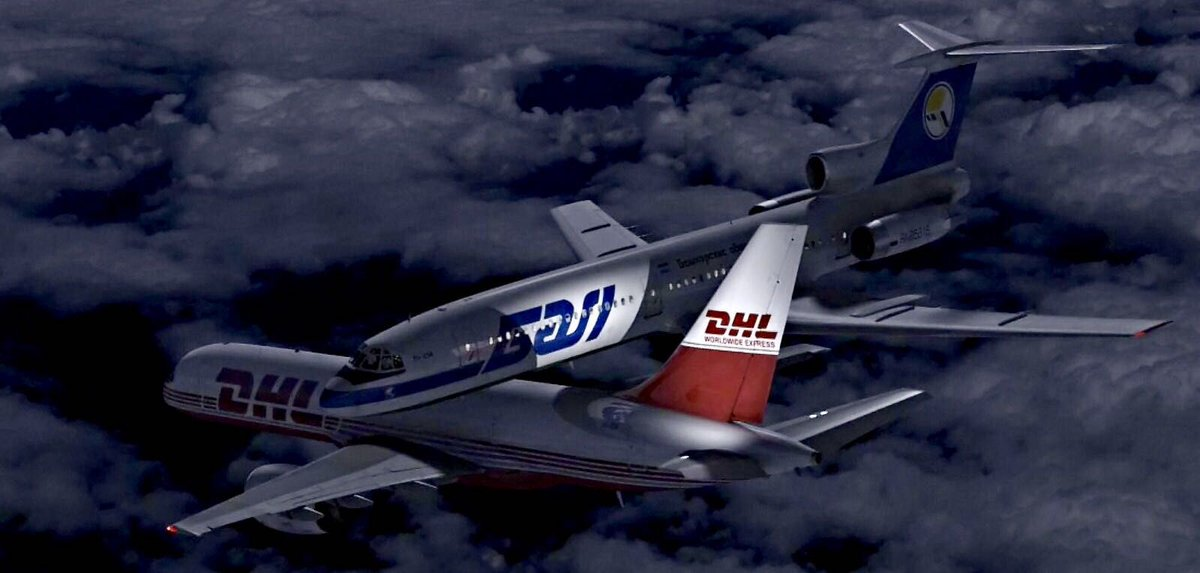Hereby a small list of Accidents and incidents investigated as required by Annex 13, where as CNS?ATM infrastructure had a contributing factor, identified in the final reports.
In Europe this annex 13 is regulated by Regulation (EU) No 996/2010 of the European Parliament and of the Council of 20 October 2010 on the investigation and prevention of accidents and incidents in civil aviation.
Uberlingen Accident
On the night of 1 July 2002, Bashkirian Airlines Flight 2937, a Tupolev Tu-154 passenger jet, and DHL Flight 611, a Boeing 757 cargo jet, collided in mid-air over Überlingen, a southern German town on Lake Constance, near the Swiss border.
Maintenance work was being carried out on the main radar image processing system, which meant that the controllers were forced to use a fallback system.
At the same instance, work was ongoing on the VCS, so the ATCO had to work on the backup VCS.
The Criminal Prosecution
The Charge(s): Charges of Negligent Manslaughter and Negligent disruption of public transport were brought against eight Skyguide employees on 7 August 2006:
- Three ATC Managers
- The ATSEP Project Leader for maintenance work being carried out at the time of the accident
- An ATSEP worker
- The ATCO also on duty but on an approved break at the time of the accident
- An ATC Supervisor
- A Technical System Manager
Some of the technical recommendations :
- Establish and implement the checklists for the maintenance as well operational staff, when maintenance work on the ATC Systems is undertaken, to enhance the safety net.
- Selection of best possible time from operational aspects for the maintenance work on the ATC Systems. [No. 01/2003]
- that to improve the investigation of future accidents and incidents, ICAO should require ATS units – in addition to present regulations – to be equipped with a recording device that records back-ground communication and noises at ATCO workstations similar to a flight deck area microphone system. [No. 09/2004]
- that the Federal Office for Civil Aviation (FOCA) should ensure that the air traffic control units of the air traffic control service provider are equipped with an effective Short Term Conflict Alert system covering the following minimum demands:
- An appropriate indication of failure or unavailability of STCA at the affected air traffic controller workstation.
- An adjustment of volume that prevents the controller from missing the acoustical STCA warning.
- When activated the acoustical STCA warning should sound permanently until acknowledgement at the affected workstation by the ATCO. [No. 10/2004]
- should ensure that the air traffic control service provider equips air traffic control units with telephone systems which in case of a failure or shutdown of the main telephone system reroutes incoming telephone calls automatically to the bypass telephone system.<[No. 11/2004]
- that the Federal Office for Civil Aviation (FOCA) should ensure that the radar system of the air traffic control service provider is technically equipped in a way that enables display updates within 8 seconds or less in en-route air-space. No. 12/2004]
- that the Federal Office for Civil Aviation (FOCA) should ensure that the air traffic control units of the air traffic control service provider are equipped with system recording and replay facilities in accordance (with) a recommendation of EUROCONTROL that enables a complete reconstruction of the surveillance data presentation, display settings and selections at controller display positions. [No. 13/2004]
Linate disaster
The Linate Airport disaster occurred on 8 October 2001 at Linate Airport in Milan, Italy, when Scandinavian Airlines Flight 686, a McDonnell Douglas MD-87 airliner bound for Copenhagen, Denmark, collided on take-off with a Cessna Citation CJ2 business jet bound for Paris, France. Investigation revealed the collision was caused by a number of nonfunctioning and nonconforming safety systems, standards, and procedures at the airport
Linate Airport was operating without a functioning ground radar system at the time, despite having had a new system delivered some years beforehand. The previous system had been decommissioned, but the replacement had not been fully installed. The new system finally came online a few months later.
The Investigation Final Report provided a list of the “Immediate and Systemic causes that led to the Accident” of which one about CNS/ATM :
operational procedures allowing high traffic volume (high number of ground movements) in weather conditions as were current the day of the accident (reduced visibility) and in the absence of technical aids;
other recommendations are:
That in respect of ATC equipment and procedures, ENAV and ENAC, the national competent Authority, should evaluate the following:b) the TWR airport emergency signal equipment should be recorded and time stamped;c) the emergency frequency speaker system should be positioned so as to be audible from all controller of the TWR control room;d) the addition of visual recognition capability (light source) to the ELT activation signal;e) the installation of the necessary equipment (radio and frequency) to allow TWR to monitor firemen service communications, when needed;
GUAM Accident
Korean Air Flight 801 (KE801, KAL801) was a scheduled international passenger flight operated by Korean Air.
The flight crashed on August 6, 1997, on approach to Antonio B. Won Pat International Airport, in the United States territory of Guam. There was heavy rain at Guam so visibility was significantly reduced and the crew attempted an instrument landing.
The glideslope Instrument Landing System (ILS) for runway 6L was out of service; Captain Park believed it was in service, however, and at 1:35 am managed to pick up a signal that was later identified to be from an irrelevant electronic device on the ground. The crew noticed that the aircraft was descending very steeply, and noted several times that the airport “is not in sight.” Despite protests from flight engineer Nam that the detected signal was not the glide-slope indicator, Park pressed on. The crew lowered the landing gear and continued to prepare the aircraft for landing.[8] 12 seconds before impact, the Ground Proximity Warning system activated, warning the crew about their actual altitude. First officer Song declared a missed approach, and captain Park declared a go-around, but it was too late. At 1:42 am, the aircraft’s main landing gear struck a fuel pipeline, and crashed into Nimitz Hill near Asan, Guam. The crash site was about 3 nautical miles (3.5 mi; 5.6 km) short of the runway, at an altitude of 660 feet (200 m).
The U.S. National Transportation Safety Board (NTSB) investigation report stated that a contributing factor was that the ATC Minimum Safe Altitude Warning (MSAW) system at Antonio B. Won Pat International Airport had been deliberately modified so as to limit spurious alarms and could not detect an approaching aircraft that was below minimum safe altitude.
The report also identified that the captain may have mistakenly believed that the airplane was closer to the airport than it was and that there may have been confusion about the location of the Distance Measuring Equipment (DME) in relation to the airport, with the crew anticipating the VOR/DME to be located at the airport. The DME was sited at the NIMITZ VOR some 3.3 nmi (3.8 mi; 6.1 km) from the airport and such a configuration had not been part of Korean Air’s simulator training, the crew’s training for such non-precision approaches having been carried out in scenarios where the DME was located at the airport. Nevertheless the correct DME distances were shown on the approach chart.
NZ60 ILS incident
On the 30th of July 2000, a New Zealand B767 jet bound for Faleolo International Airport, Apia encountered an erroneous ILS indication on approach. There were airfield works in progress at the airfield. There were 9 NOTAMS issued on the serviceability of the various navaids at the airport.
The crew briefed for an ILS approach with the VOR approach as a backup. The flight was cleared for the FALE arrival 15 mile ARC for ILS 08. A low drag approach was conducted with a tailwind of 10 knots.The Localiser was captured at 14 nm with FLAP 1 and 220 knots. One second after the APPROACH mode was armed, the glideslope was captured by the autoflight system. The indications showed the aircraft at the correct flight profile without any warning flags with the ident of the ILS being emitted.
On capturing the glideslope, the aircraft pitched down lower than usual with an increase in airspeed and higher rate of descend. The crew proceeded to concentrate on the management of the energy of the aircraft with the use of speedbrake, gear and flaps.
After landing flaps were selected, the Pilot Flying noticed the anomaly of DME vs altitude. The Pilot Monitoring noticed that the visual cues (the proximity of the island light looked closer) did not correspond to his mental picture.
A go around was called by all pilots and executed at 6 nm from the runway threshold. A second approach was conducted as a Localicer approach disregarding the glideslope signal.

